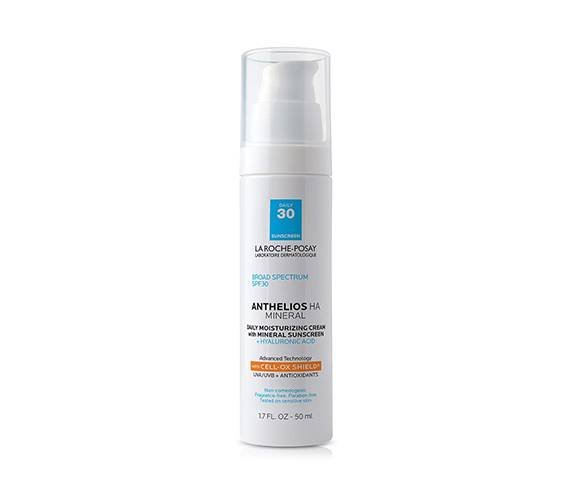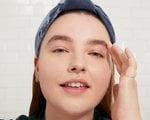9 Common Skin Cancer Myths Debunked
May 03, 2021
Skin cancer is serious business. Luckily, there are several ways to protect yourself against skin cancer, from applying SPF and staying out of the sun to performing at-home ABCDE tests and visiting a derm for annual full-body exams. But to best protect yourself, it’s important to also know fact from fiction. According to the American Society for Dermatologic Surgery (ASDS), skin cancer is the most commonly diagnosed form of cancer and oftentimes goes undetected due to misinformation. To stop the spread of falsities, we’re debunking nine skin cancer myths, ahead.
MYTH: SKIN CANCERS AREN’T DEADLY.
Unfortunately, skin cancer can be deadly. Melanoma, which accounts for the vast majority of skin cancer deaths, is almost always curable when found in very early stages, according to the American Cancer Society. If left undetected, it can spread to other parts of the body, making it difficult to treat. As a result, melanoma accounts for more than 10,000 of the more than 13,650 skin cancer deaths each year.
MYTH: SKIN CANCER ONLY AFFECTS OLDER ADULTS.
Don’t believe this for a second. Melanoma is the most common form of cancer in young adults ages 25 to 29, and is more frequently found in women, according to the ASDS. In order to prevent skin cancer at any age, it’s important to wear sunscreen, monitor moles at home and schedule regular appointments with your dermatologist.
MYTH: I’M NOT AT RISK FOR SKIN CANCER IF I DON’T SPENT A LOT OF TIME OUTSIDE.
Think again! According to the ASDS, even brief everyday exposure to UV rays — think: driving with the sunroof open or eating lunch outside during peak sun hours — can lead to significant damage, primarily in the form of squamous cell cancer. Although not as dangerous as melanoma, it is believed to cause up to 20% of skin cancer-related deaths.
MYTH: PEOPLE WHO TAN WITHOUT BURNING WILL NOT GET SKIN CANCER.
There’s no such thing as a healthy sun tan. It would be hard to find a derm advocating for sunbathing, since any change in your natural skin color is a sign of damage. According to the ASDS, any time the skin is exposed to UV radiation, there is an increased risk of developing skin cancer. Wear broad-spectrum sunscreen every day to protect your skin and be sure to reapply often, wear protective clothing, and seek shade during peak sun hours to be extra cautious.
MYTH: DARK-SKINNED PEOPLE DON’T HAVE TO WORRY ABOUT SKIN CANCER.
Not true! Naturally dark-skinned people have a lower risk of skin cancer compared to fair-toned individuals, but they are certainly not immune to skin cancer, says the ASDS. Everyone must take the necessary precautions to protect their skin from exposure to the sun and subsequent UV damage.
MYTH : TANNING BEDS ARE A HEALTHY OPTION FOR BOOSTING VITAMIN D LEVELS.
Vitamin D is received through exposure to UVB rays. The bulbs used in tanning beds typically only use UVA rays and are a known carcinogen, according to the Skin Cancer Foundation. One single indoor tanning bed session can increase your chances of developing melanoma by 20 percent, and each session during the same year can boost the risk almost another two percent.
MYTH: MY DOCTOR CAN ALWAYS REMOVE MY UNUSUAL-LOOKING MOLE BEFORE IT TURNS CANCEROUS.
Don’t wrongly assume that your doctor can remove your mole before it turns cancerous, especially if you’ve noticed a mole change in color and size. Without yearly skin checks, you may already be at risk without even knowing it—especially if you don’t pass the ABCDE self-test. In this case, it is crucial to seek a doctor or licensed skin expert as soon as possible.
MYTH: WHERE I’M FROM, WINTERS ARE LONG, SO I’M NOT AT RISK.
False! The sun’s intensity may be lower in the winter, but as soon as it snows you’ve increased your risk of sun damage. Snow reflects the damaging rays of the sun which can increase your risk of getting a sunburn.
MYTH: ONLY UVB RAYS CAUSE SUN DAMAGE.
This is untrue. Both UVA and UVB can cause sunburns and other forms of sun damage that could potentially lead to skin cancer. You’ll want to look for a sunscreen that can provide protection against both –– look for the term “broad-spectrum” on the label. We recommend the La Roche-Posay Anthelios Mineral SPF 30 Moisturizer with Hyaluronic Acid to protect against the sun’s harmful rays while reducing the appearance of existing sun damage and discoloration.

Editor’s note: Signs of skin cancer aren’t completely obvious to spot. This is why the Skin Cancer Foundation recommends that everyone practice head-to-toe self-examination in addition to getting yearly check-ups to ensure all moles and birthmarks are in good condition. In addition to scanning the skin on your face, chest, arms and legs, don’t forget to look over these unlikely places
Read More:
How to Find the Best Physical Exfoliator for Your Skin Type
What Does SPF Mean? A Crash Course in Sunscreen and Sun Safety
Astringent vs. Toner —What’s the Difference?




.jpg?cx=0.490000009536743&cy=0.540000021457672&cw=150&ch=120&blr=False&hash=0B0F55675A6B9FE3724F6E2EC9118A01)









.jpg?cx=0.490000009536743&cy=0.540000021457672&cw=150&ch=120&blr=False&hash=5E78490B76BBC8CC9D76D2EBDFF515E0)










